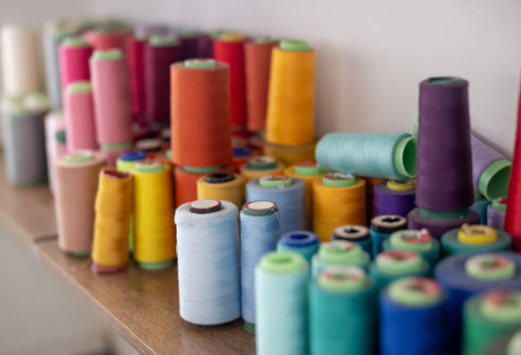Introduction
Ancillary fabrics are an essential part of the textile industry, serving as complementary materials in the production of various finished goods. China, known for its manufacturing prowess, offers a wide range of ancillary fabrics at wholesale prices. In this article, we will explore the world of Ancillary fabrics wholesale in China, highlighting the benefits, types of fabrics available, the manufacturing process, and the key considerations when making a purchase.
1. The Advantages of Ancillary Fabrics Wholesale in China
Ancillary fabrics wholesale in China presents several advantages for buyers around the globe. The country's well-established textile industry, vast production capabilities, and competitive pricing make it an attractive destination for sourcing ancillary fabrics. Additionally, Chinese manufacturers often offer a wide range of fabric options, providing buyers with ample choices to suit their specific needs.
2. Types of Ancillary Fabrics Available in China
China's ancillary fabrics market offers an extensive variety of options to cater to diverse requirements. Some popular types of ancillary fabrics available for wholesale purchase in China include:
- Elastic bands: Ideal for waistbands, cuffs, and other stretchable applications.
- Zippers: Essential fastening components for garments, bags, and upholstery.
- Buttons: Versatile accessories available in various materials, sizes, and designs.
- Laces and trims: Decorative elements used to enhance the aesthetics of clothing and home textiles.
- Interlinings: Used to provide structure, shape, and stability to garments.
- Elastic tapes: Used for binding, reinforcement, or decorative purposes.
3. The Manufacturing Process of Ancillary Fabrics
The manufacturing process of ancillary fabrics involves several stages, starting from the selection of raw materials to the final production. In China, the process typically includes:
- Raw material sourcing: Sourcing high-quality materials, such as polyester, nylon, or metal, from trusted suppliers.
- Preparation: Preparing the materials for further processing, which may involve cutting, shaping, or treating them for specific characteristics.
- Production: Utilizing specialized machinery and equipment to manufacture ancillary fabrics according to the desired specifications.
- Quality control: Conducting rigorous quality checks at various stages to ensure the fabrics meet the required standards.
- Packaging and shipping: Packaging the finished ancillary fabrics and arranging for their shipment to buyers.
4. Factors to Consider When Purchasing Ancillary Fabrics Wholesale in China
Before making a wholesale purchase of ancillary fabrics in China, it is essential to consider the following factors:
- Price: Compare prices from different suppliers to ensure competitive pricing.
- Minimum order quantity (MOQ): Determine if the supplier's MOQ aligns with your requirements.
- Quality: Request samples or check for certifications to assess the quality of the fabrics.
- Production capacity: Evaluate the supplier's production capacity to ensure they can meet your demand.
- Lead time: Inquire about the estimated lead time for production and delivery.
- Communication: Ensure effective communication channels with the supplier to avoid misunderstandings and delays.
5. Finding Reliable Ancillary Fabrics Wholesalers in China
While there are numerous ancillary fabrics wholesalers in China, it is crucial to find reliable and trustworthy suppliers. Some effective methods to find such wholesalers include:
- Online B2B platforms: Utilize reputable B2B platforms like Alibaba, Global Sources, or Made-in-China to find verified suppliers.
- Trade fairs and exhibitions: Attend industry-specific trade shows or exhibitions where you can meet potential suppliers in person.
- Referrals: Seek recommendations from industry peers or colleagues who have prior experience in sourcing ancillary fabrics from China.
6. Overcoming Language and Cultural Barriers
When dealing with Chinese suppliers, it is important to overcome language and cultural barriers to ensure smooth communication and successful transactions. Consider the following tips:
- Use translation tools: Utilize online translation tools or hire a translator to bridge the language gap.
- Respect cultural norms: Familiarize yourself with Chinese business etiquette and customs to build strong relationships with suppliers.
- Be patient and understanding: Keep in mind that cultural differences may affect the speed and style of communication, so exercise patience and understanding.
7. Quality Control and Assurance
Ensuring the quality of ancillary fabrics is crucial to maintain customer satisfaction. When sourcing from China, implement the following quality control measures:
- Request samples: Ask for fabric samples before placing a bulk order to assess their quality.
- Enforce product specifications: Clearly communicate your requirements to the supplier and ensure they adhere to the agreed specifications.
- Conduct inspections: Consider hiring third-party inspection agencies to perform quality checks during production or before shipment.
- Obtain certifications: Verify if the supplier holds relevant certifications, such as ISO or Oeko-Tex, indicating their commitment to quality standards.
8. Packaging and Shipping
Proper packaging and shipping are crucial to ensure the ancillary fabrics reach their destination in optimal condition. Consider the following:
- Secure packaging: Request the supplier to use appropriate packaging materials to protect the fabrics from damage during transit.
- Optimize shipping methods: Choose the most suitable shipping method based on cost, speed, and the nature of the ancillary fabrics.
- Customs and import regulations: Familiarize yourself with the customs and import regulations of your country to prevent any complications during shipping.
- Insurance: Consider insuring the shipment to safeguard against any potential loss or damage.
9. Building Long-Term Relationships
Establishing strong and long-term relationships with reliable suppliers in China can be highly beneficial. Consider the following strategies:
- Consistent communication: Maintain regular and open communication with your suppliers to strengthen the relationship.
- Provide feedback: Offer constructive feedback and suggestions for improvement to help suppliers understand your specific requirements better.
- Consider bulk orders: Placing larger orders can often result in better pricing and priority treatment from suppliers.
- Visit suppliers: If feasible, plan visits to your suppliers' facilities to solidify the relationship and gain a deeper understanding of their operations.
10. Conclusion
Ancillary fabrics wholesale in China offers a wide range of options for buyers seeking high-quality materials at competitive prices. By considering factors such as pricing, quality, and production capacity, and by establishing strong relationships with reliable suppliers, buyers can successfully navigate the ancillary fabrics market in China and meet their business needs.

